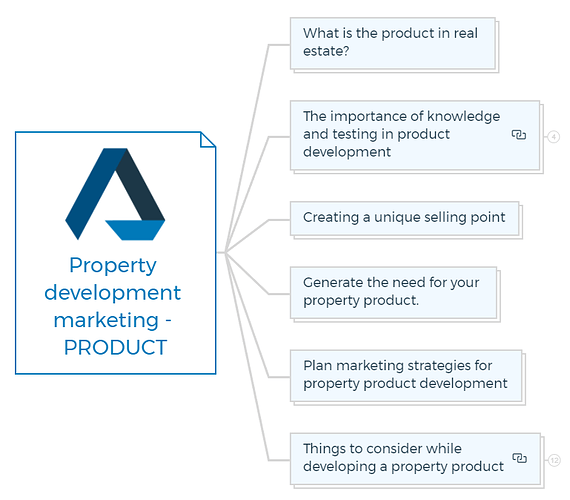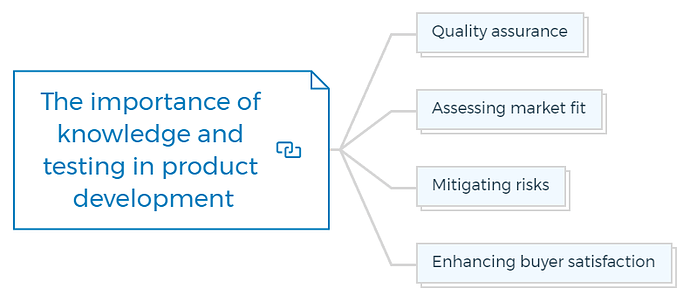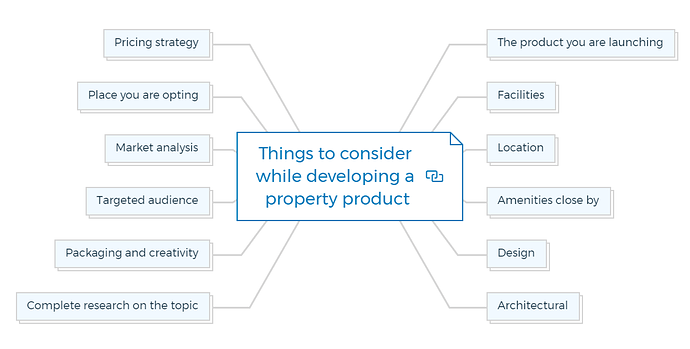Product
In the dynamic and competitive real estate industry, marketing and pre-sales strategies play a pivotal role in the success of property products. Effective marketing campaigns and strategic pre-sales initiatives can generate awareness, create demand, and drive sales.
What is the product in real estate?
In real estate, the “product” isn’t just the house or property itself but also the features that make it appealing to potential purchasers.
The ability to effectively market a property to a specific demographic depends on the real estate agent’s familiarity with the property’s unique selling points.
The product is made up of two things - the target buyer profile and the type of product (property). You can collect the details for the target buyer profile from several websites, such as Realestate Agents, www.abs.gov.au, and many more.
You are missing out if you haven’t yet subscribed to our YouTube channel.
The importance of knowledge and testing in product development
Having a wide range of knowledge of the product you are launching is a vital requirement for the development project.
A person should be aware of all the quality aspects and flaws of the product he is about to bring to light. They should test the product for all the side effects as well as the pros and cons of it.
A detailed study is required if you are launching the product for a niche market; for example, insulin or any medicine can only be consumed by people with diabetes or patients suffering from any kind of disease.
Quality assurance
To guarantee the quality and functionality of a real estate product, it must undergo extensive testing.
In order to fix any problems that may arise with the property before it is released to the public, testing is essential.
Property developers may ensure their product is of the highest quality and lives up to, if not exceeds, the expectations of consumers by conducting thorough testing of the building’s design, construction, materials, features, and general integrity.
Assessing market fit
Developers can evaluate the market viability of their property development project by gathering information and conducting tests. Developers can meet consumer needs by learning about and catering to existing tastes and trends through market research.
By comparing the product to market standards, designers can make changes to better suit the product to the target audience’s tastes.
Knowledge and testing can lessen concerns during the real estate product development process.
Mitigating risks
In order to comply with rules and reduce legal or financial risks, a comprehensive awareness of relevant laws, zoning restrictions, environmental constraints, and other considerations is essential.
Safety risks and other problems that could arise during the use or sale of the property can also be uncovered through testing.
Enhancing buyer satisfaction
A property product that has been well created and tested can have a positive effect on buyer satisfaction.
With an understanding of the demographics of the target market and the tastes of potential purchasers, construction companies can include desirable features and services.
A well-tested building serves its intended purpose and creates a satisfying environment for its residents or employees.
Buyers who are satisfied with the purchase are more inclined to promote the property to others and spread the word about its greatness. Knowledge and testing help establish credibility, and credibility is essential in the real estate business.
Creating a unique selling point
Make your real estate product sellable, have a Unique Selling Point, and create the need for your product amongst the audience.
What makes one real estate offering better than another and more appealing to potential purchasers is the product’s unique selling proposition (USP). Creating a compelling, unique selling proposition is crucial for successful advertising and customer acquisition.
Follow the below steps to create a Unique Selling Point for your Property Product.
- Understand the target market
- Identify the property’s unique feature
- Solve the problem or fulfil a need
- Highlight key benefits
- Differentiate from competitors
- Develop a compelling value proposition
- Consistency in branding and marketing
- Test and refine
Generate the need for your property product.
A product’s sale is dependent on the need; it’s a ‘your need, my opportunity’ loop.
For example, antivirus companies first create a virus and bug ahead of time before creating an antivirus. Then they launch the bug by themselves and then wait for the need for antivirus to arise. Hence, this very need increases the sales ten times more than actual.
Determine how your property addresses a specific problem or fulfils a particular need in the market. Think about the pain points or challenges that potential buyers may have and how your property product can provide a solution or meet those needs.
Plan marketing strategies for property product development
Furthermore, marketing should be done crucially considering all the USPs, if more than one, along with all the product’s benefits.
Marketing is required to be conducted to create awareness for your product. Choose the correct medium for your advertising based on your product’s needs.
People and pricing are two of the most common marketing factors that affect business growth and revenue generation. They are the heart of the whole system; one factor is engendered by the other and vice versa.
Things to consider while developing a property product
You may need to consider as well as have a thorough knowledge of the following factors while developing your property (product):
The product you are launching
Gain a thorough understanding of the property product you are developing. Define its purpose, unique selling points, and target market.
Facilities
Determine the facilities that will be incorporated into the property. This could include amenities such as swimming pools, gyms, parking spaces, gardens, security systems, and more.
Consider the needs and preferences of your target audience when deciding on the facilities.
Location
The location of the property is of utmost importance. Conduct thorough research on the area, including factors like accessibility, proximity to transportation hubs, schools, hospitals, shopping centres, and other amenities.
A prime location can significantly increase the value and desirability of the property.
Amenities close by
Consider the availability of essential amenities and services near the property. This includes schools, hospitals, shopping centres, parks, recreational facilities, and public transportation options.
Proximity to these amenities enhances potential buyers’ convenience and quality of life.
Design
The property’s design plays a crucial role in its attractiveness and functionality. Hire skilled architects and designers to create a visually appealing and functional layout that maximises space utilisation and incorporates modern design trends.
Learn More
Architectural
Choose an architectural style that fits the target market and locale. Architectural design should match market purchasers’ tastes, whether modern, contemporary, historic or a mix.
Complete research on the topic
Study market demand for similar properties, pricing patterns, and competition. This research will guide your growth choices.
Packaging and creativity
Consider how you will market the property. Packaging, marketing materials, brochures, virtual tours, and other creative aspects can successfully exhibit the property’s distinctive characteristics and benefits.
Targeted audience
Choose your audience based on demographics, lifestyle, and spending power. Customise your property product for your target market.
Market analysis
Understand market dynamics. To position your product competitively, analyse market trends, demand-supply dynamics, and pricing tactics of similar properties.
Learn More
Place you are opting
Choose your property launch location carefully. For long-term success, evaluate market demand, growth potential, infrastructure development, and site prospects.
Pricing strategy
Match the property product’s value proposition to your target market’s expectations. Price based on construction costs, location, market demand, and profit margins.
Test Your Knowledge
Property Development Marketing - Product Understanding Assignment
Objective:
This assignment is designed to deepen your understanding of property development marketing, focusing on the concept of the “product” in real estate. Through a series of questions, tasks, and research activities, you will explore the various aspects of marketing and pre-sales strategies in the real estate industry. You will apply what you have learned to create a comprehensive marketing plan for a hypothetical property product.
Part 1: Understanding the Product
Question
Explain why a property in real estate is more than just the physical building. Include examples of features that might appeal to potential purchasers.
To Do
Choose a residential property listing online. Identify its unique selling points (USPs) that make it appealing to its target demographic. Consider factors such as location, facilities, design, and nearby amenities.
Research Question
How does the target buyer profile affect the marketing strategy for a property product? Use resources such as Real Estate Agents’ websites or www.abs.gov.au to gather information about potential buyer demographics.
Part 2: Quality Assurance and Market Fit
Question
Discuss the importance of quality assurance in property development. What are some methods developers might use to test the quality and functionality of a property?
To Do
Create a checklist for assessing the market fit of a property development project. Include aspects such as market research, comparison to market standards, and understanding consumer needs.
Research Question
Investigate a real estate development project that failed to meet market expectations. Identify the gaps in market fit assessment and suggest improvements based on your understanding.
Part 3: Mitigating Risks and Enhancing Buyer Satisfaction
Question
Explain how knowledge and testing can mitigate risks in property development, including legal, financial, and safety risks.
To Do
Interview a local real estate agent or property developer about the strategies they use to enhance buyer satisfaction. Summarize the key points and reflect on how these strategies align with what you’ve learned.
Research Question
Explore the role of demographics in property product development. How do developers cater to the needs and preferences of different age groups, income levels, and lifestyles?
Part 4: Creating a Unique Selling Point and Marketing Strategy
To Do
Develop a Unique Selling Point (USP) for a hypothetical property. Follow the steps outlined in the article: Understand the target market, identify the property’s unique feature, solve a problem or fulfill a need, and highlight key benefits.
To Do
Plan a marketing strategy for your hypothetical property product. Consider the USPs, target audience, and appropriate advertising mediums. Address how you would create awareness and generate a need for your product.
Research Question
Investigate a successful real estate marketing campaign. Analyze the campaign’s objectives, target audience, USPs highlighted, and the mediums used. Evaluate the campaign’s effectiveness in creating awareness and driving sales.
Submission Requirements:
- Complete all parts of the assignment.
- For research questions and tasks requiring external information, cite at least three sources.
- Submit your assignment in a document format, including a cover page, table of contents, and references.







